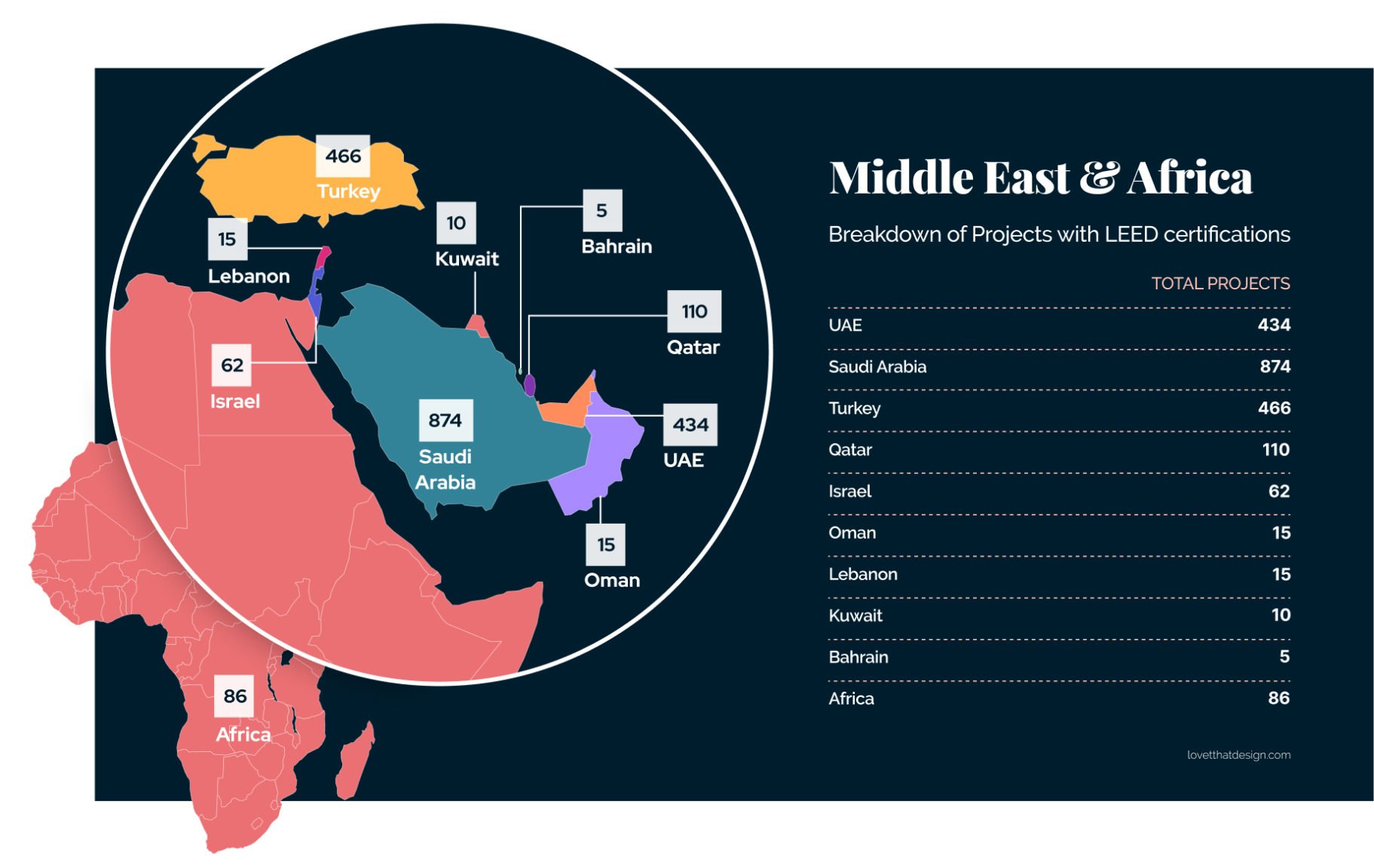If you are part of the architecture and design community in the UAE and the MEA region at large, you would probably be quite used to the words ‘green’ and ‘sustainable’ repeatedly dropped in design conversations and discussions. In recent years, the Middle East region has seen a marked awareness within the area of sustainable design. The US and many parts of Europe are still leaps and bounds ahead of the MEA region as well as the rest of the world, but the Middle East is certainly progressing in numbers, slow and steady.
This region entered late in the game, nevertheless with much gusto. The last five years have shown a steep climb in the popularity of certifications both for projects and products. Particularly in the UAE, with emphasis being placed on green building and sustainable design, and with a strong governmental backing. So we thought to look into the actual numbers, facts and figures of projects per region around the world, with a greater focus on some key developing cities in the region, to see how we measure up.
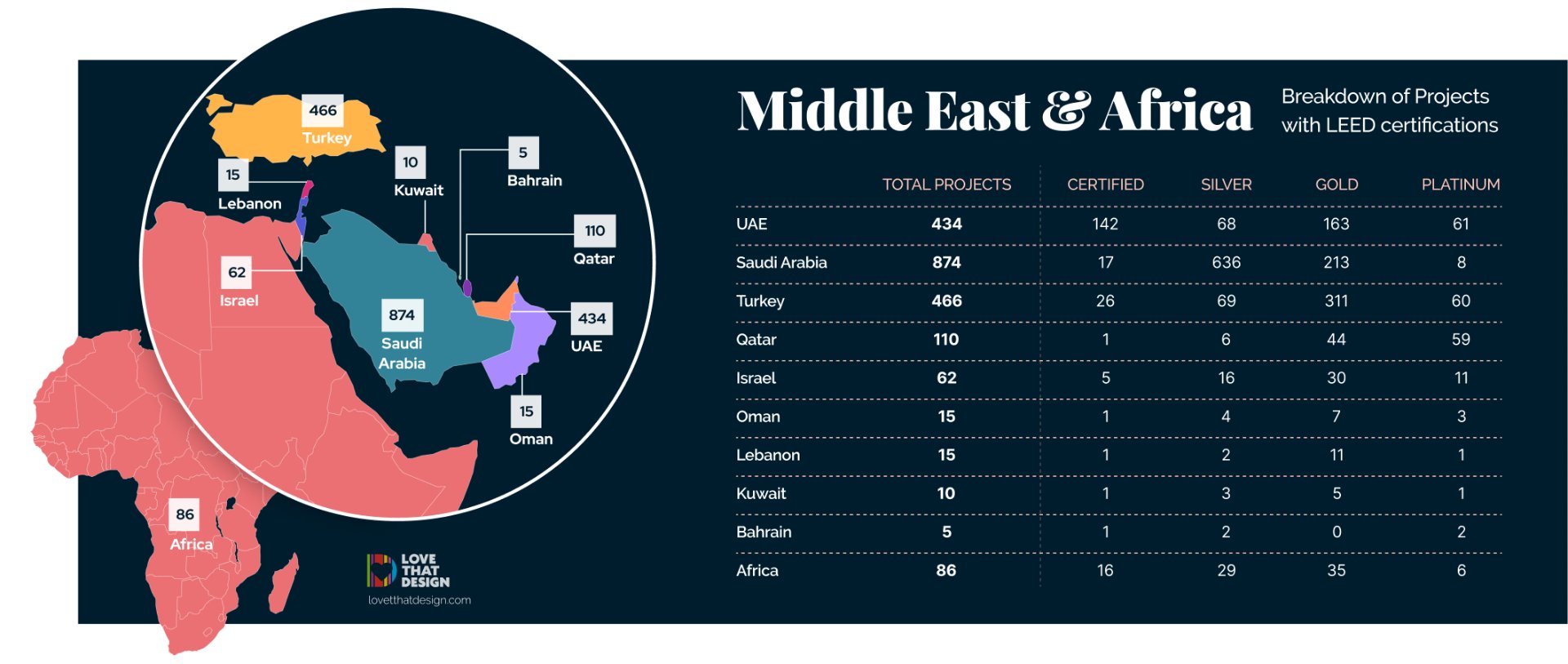
First of all, why pick LEED?
There are several certifying bodies across the globe. We chose to gather our data via the Leadership in Energy and Environmental Design, aka LEED. (US Green Building Council) simply for the fact that they are the most widely used green building rating system across the globe. Leed certifications are available for virtually any building type, and the certification body has been in existence since 1998. Furthermore, the USGBC website has an open and comprehensive database of information of all certified projects around the world – complete transparency – which only made it that much easier for us to collate the info.
LEED was born in the US, initially with the formation of USGBC in 1993 by David Gottfried, Mike Italiano and Rick Fedrizzi, who served as president, CEO and founding chair of the organisation. LEED 1.0 was developed in 1998 and following a successful pilot program, the certification was publicly launched in March 2000. Over the years, the process of certifying has been honed and progressively improved, changed and adapted to the evolving world.
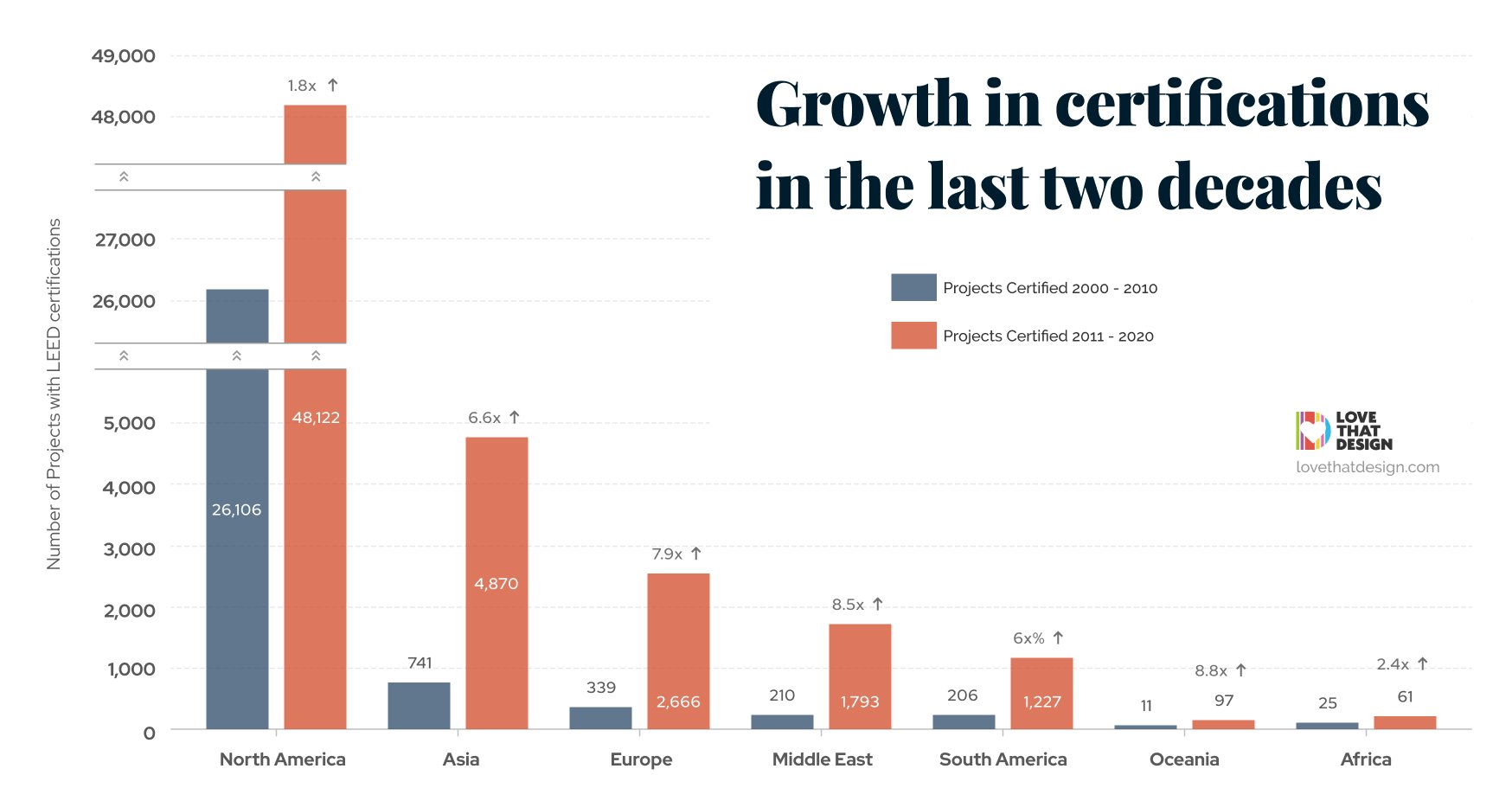
LEED’s popularity in other countries around the world
While many developing nations have formed their own region specific governing bodies for certifying projects, it appears that LEED certifications nevertheless continue to remain in good stead. In Europe, for example, LEED is still in high demand, despite several established and recognised standards. This could be partly due to its global appeal, and this has been further promoted by the brand’s clever appropriation of certification criteria, based on region. Climate, material availability, economical restrictions, and use of local resources all count towards points, and so LEED has rightfully developed specific standards for diverse regions, such as LEED India. This is a smart move on further establishing their presence outside the US.
In the two decades, most parts of the world have seen a substantial increase in LEED certified projects. The Middle East and Oceania are right at the top, seeing eight times more certifications between 2011 to 2020, than the decade before. Europe falls a close second, multiplying its numbers by seven and Asia and South America have a total increase of five times more than the previous decade. Quite a marked rise across the globe.
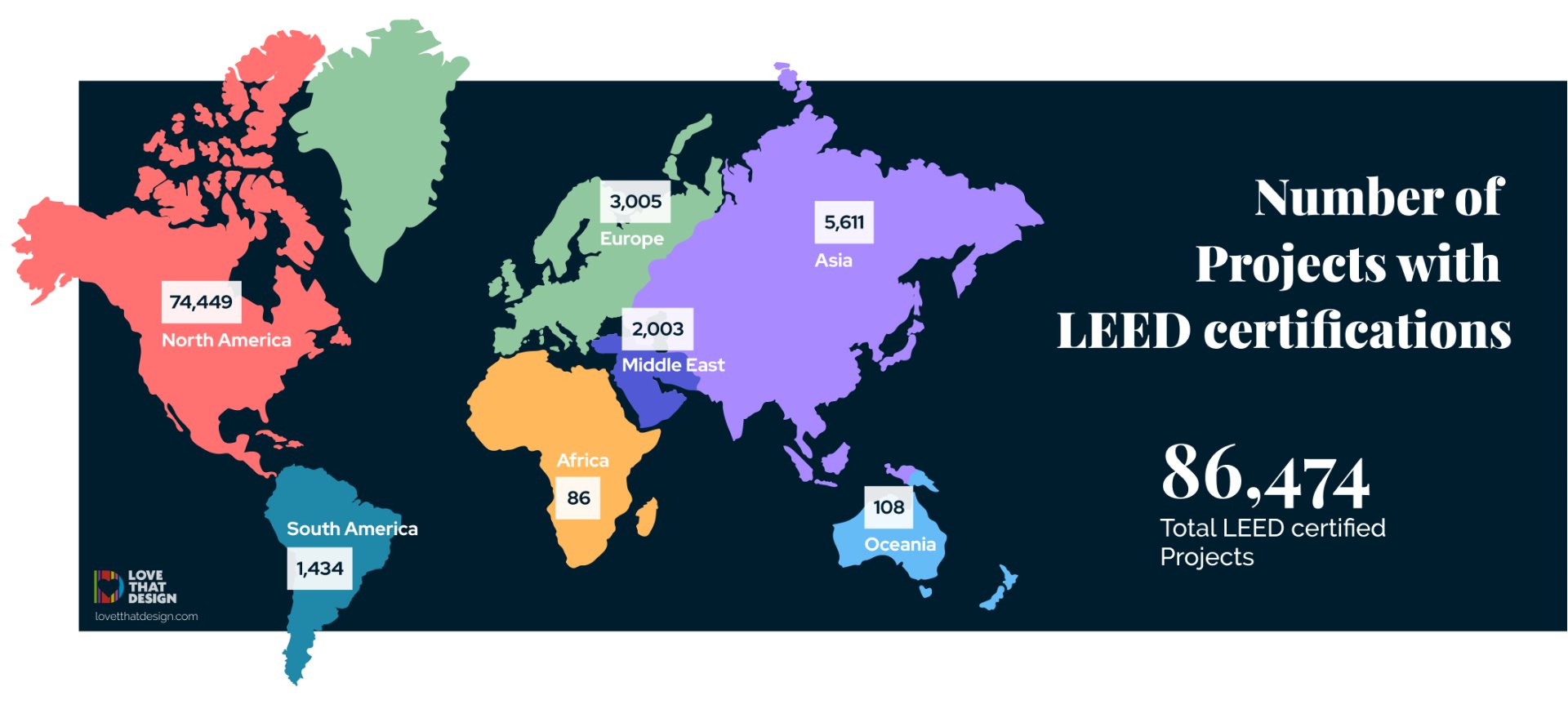
What the numbers say about the Middle East and Africa
A comparison chart below shows the growth in the number of certifications in the Middle East and Africa region between the last two decades – 2000 to 2010 and 2011 to 2020 – and some countries are clearly forging ahead.
Taking the entire continent of Africa, the numbers are lower than any thriving middle eastern country, with Egypt taking most of the credit for that region. During 2000 – 2010, Egypt was well in the lead, accounting for nearly 50 percent of certified projects, and South Africa falling in second place with 10 percent of total LEED certifications. The decade after that saw South Africa lead the way with Egypt following suit, and Kenya at a distant third.
In comparison to the US and Europe, the UAE entered the sustainability game much later on, with a strong push in the last five years towards green building. However, taking a look at the entire Middle East, Saudi Arabia holds a higher position in total certified project count among the GCC countries, and with the country’s recent boom in construction, we will only see this grow exponentially.
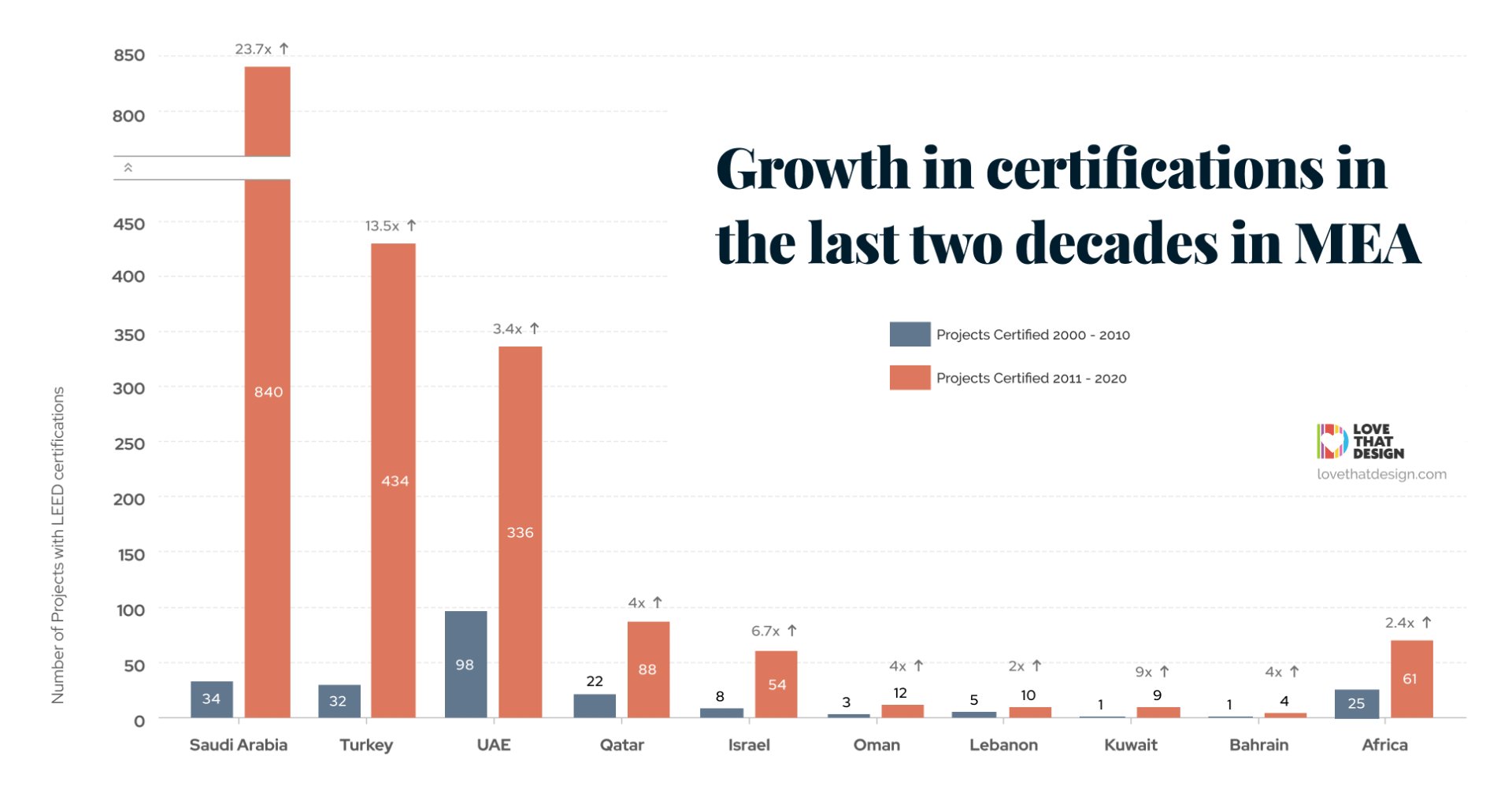
The last decade (2011 – 2020) has seen UAE, Saudi Arabia and Turkey responsible for nearly 90 percent of the total certified projects in the region, with Saudi Arabia accounting for 50 percent of them, and UAE and Turkey combined accounting for 40 percent. The previous decade (2000 – 2010) had UAE leading the way with half of the total certified projects in the region. Turkey, Saudi Arabia and Qatar accounted for 35 percent.
While LEED still holds considerable merit in the UAE, with the development of Estidama, the Abu Dhabi based standard by the Urban Planning Council, it remains to be seen whether LEED will maintain this level of growth or give way to the region’s own certification body.

